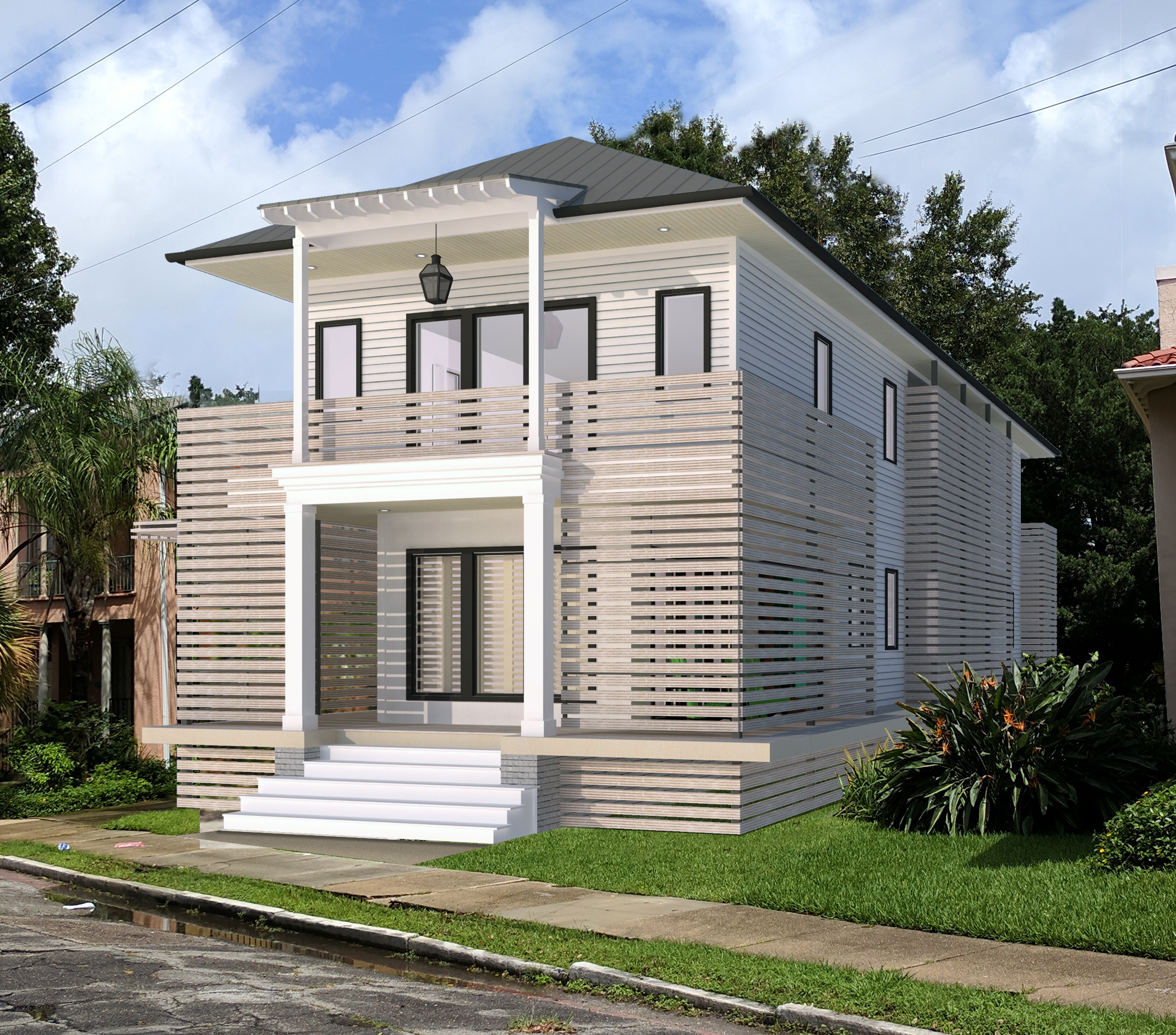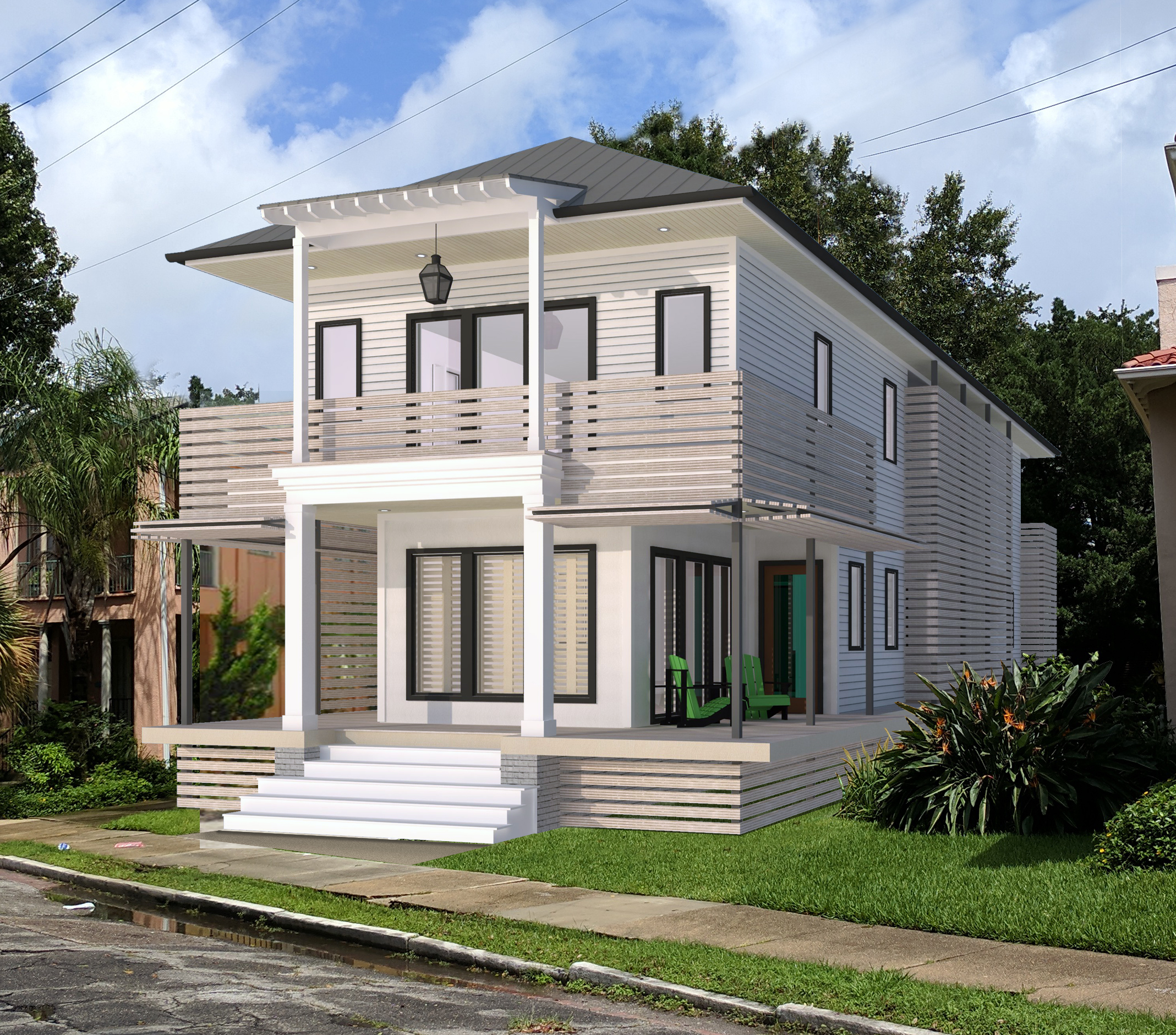The Flexessory House
The Flexessory House is a personal and professional response to how we think about urban infill development in New Orleans.
What makes New Orleans’ neighborhoods among the richest in character and memory in the world, a tourist attraction in and of itself? Its HOUSING STOCK.
What's so great about it? Two things – its ability to adapt to its surroundings and its ability to adapt to the needs of the people. So, really, one thing: resilience.
Houses here grow, adapt – they FLEX. Sometimes literally with the moisture content in the air. And they are still standing through hurricanes, design fads, and shifting demographics.
So what do we mean by FLEXESSORY?
FLEX-ing Skin
We took inspiration from the traditional Japanese ‘engawa’ space, a light-footed raised wood structure the building’s perimeter. This zone serves as a linear adaptation of the classic NOLA porch, providing shade, communal space, privacy and debris protection. Wood screens attached to this can flex open or closed to provide varying degrees of protection.
engawa (縁側 or 掾側)
is a typically wooden strip of flooring immediately before windows and storm shutters inside traditional Japanese rooms. Recently this term has also come to mean the veranda outside the room as well, which was traditionally referred to as a nure'en
Shutters & Engawa Spaces
FLEX-ing Occupancy
Houses here have long, varied histories because they never ceased to be useful, even if just enough to not demolish. A house may have started as a stately four-bedroom home for a large upper-class family, and may have later been split up into a upstairs and downstairs unit, after which it might have converted a carriage house into a rear apartment. Later, after central air was added and the plumbing easily changed out since the floor is raised, it might find new life as a bed and breakfast, a law firm office, or might again serve as a large home for a well-to-do family. Or maybe it stays a four-plex with a carriage apartment, long after zoning laws have made such an arrangement unrepeatable.
About those zoning laws – across the country, zoning laws have historically attempted to pin down a property to a very specific and isolated use. Often, a single-family house is allowed an ACCESSORY use – often with many caveats and rules in place to keep that other use from becoming another dwelling. But demand for accessory dwellings lives on, often in bending or ‘hacking’ zoning rules and grandfathering, and for good reason. It allows for additional homestead income, while easing housing stock shortages for small families, college students or the elderly, and adding to the overall neighborhood value and tax base - wins all around.
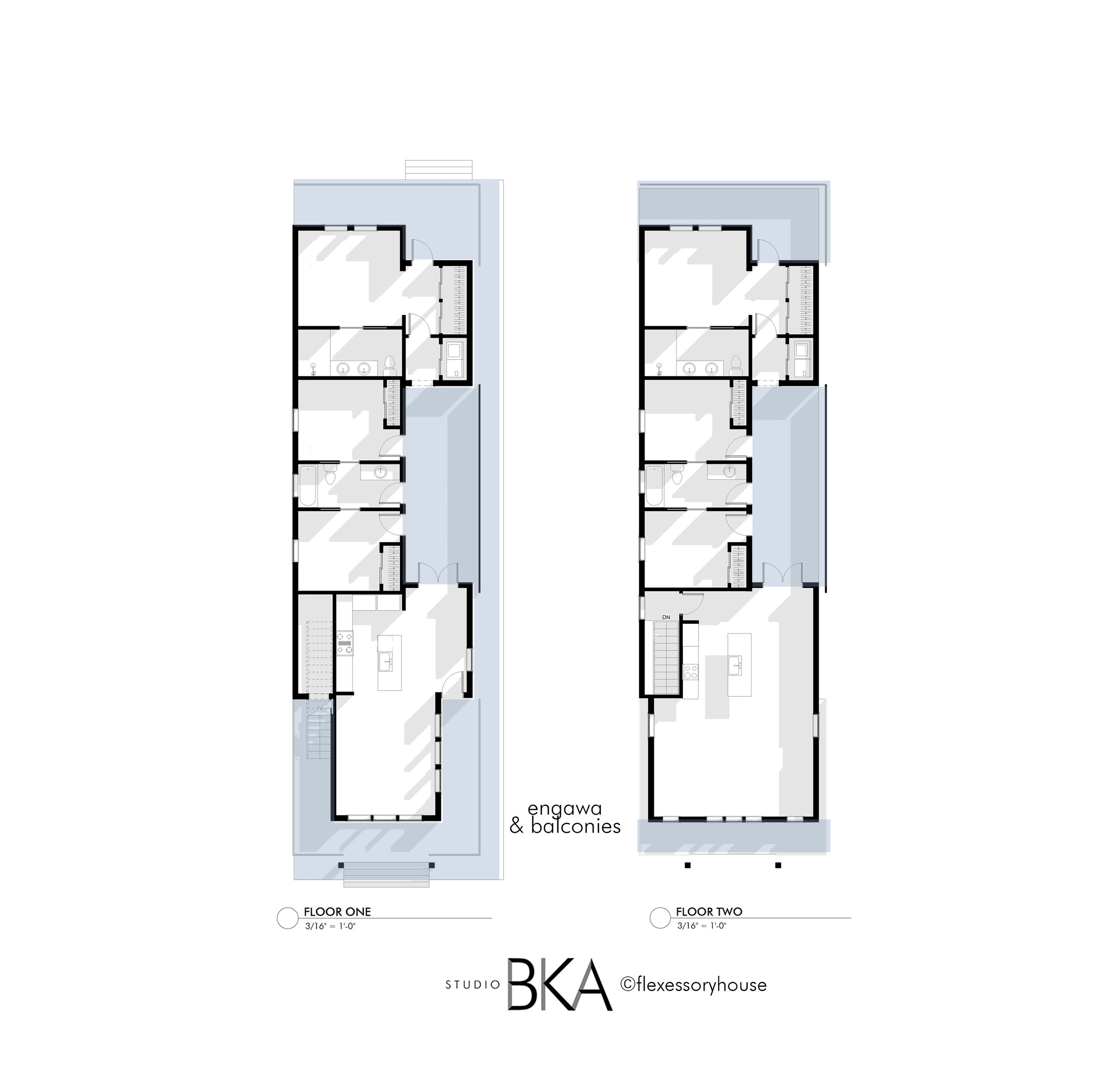
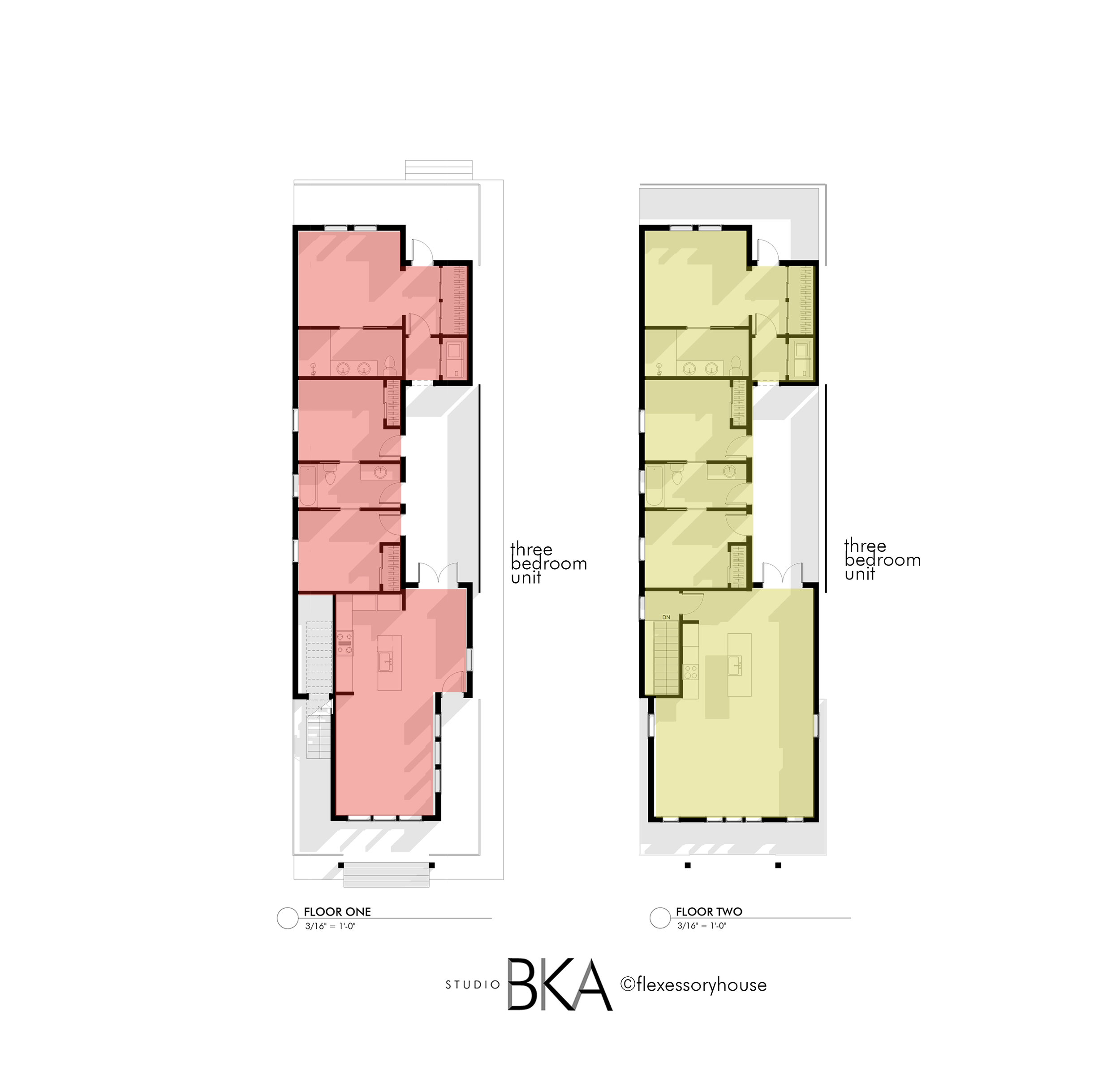
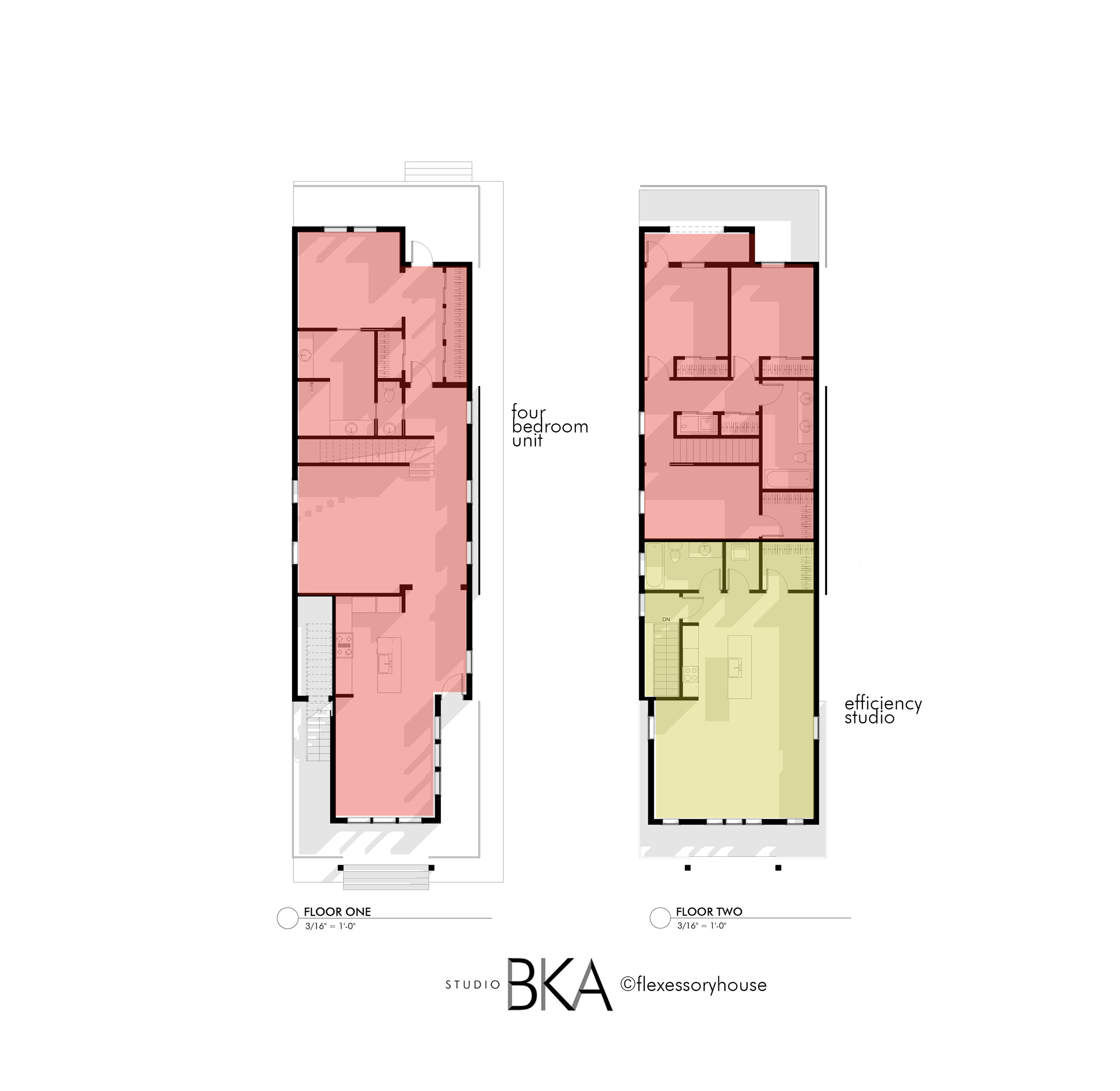
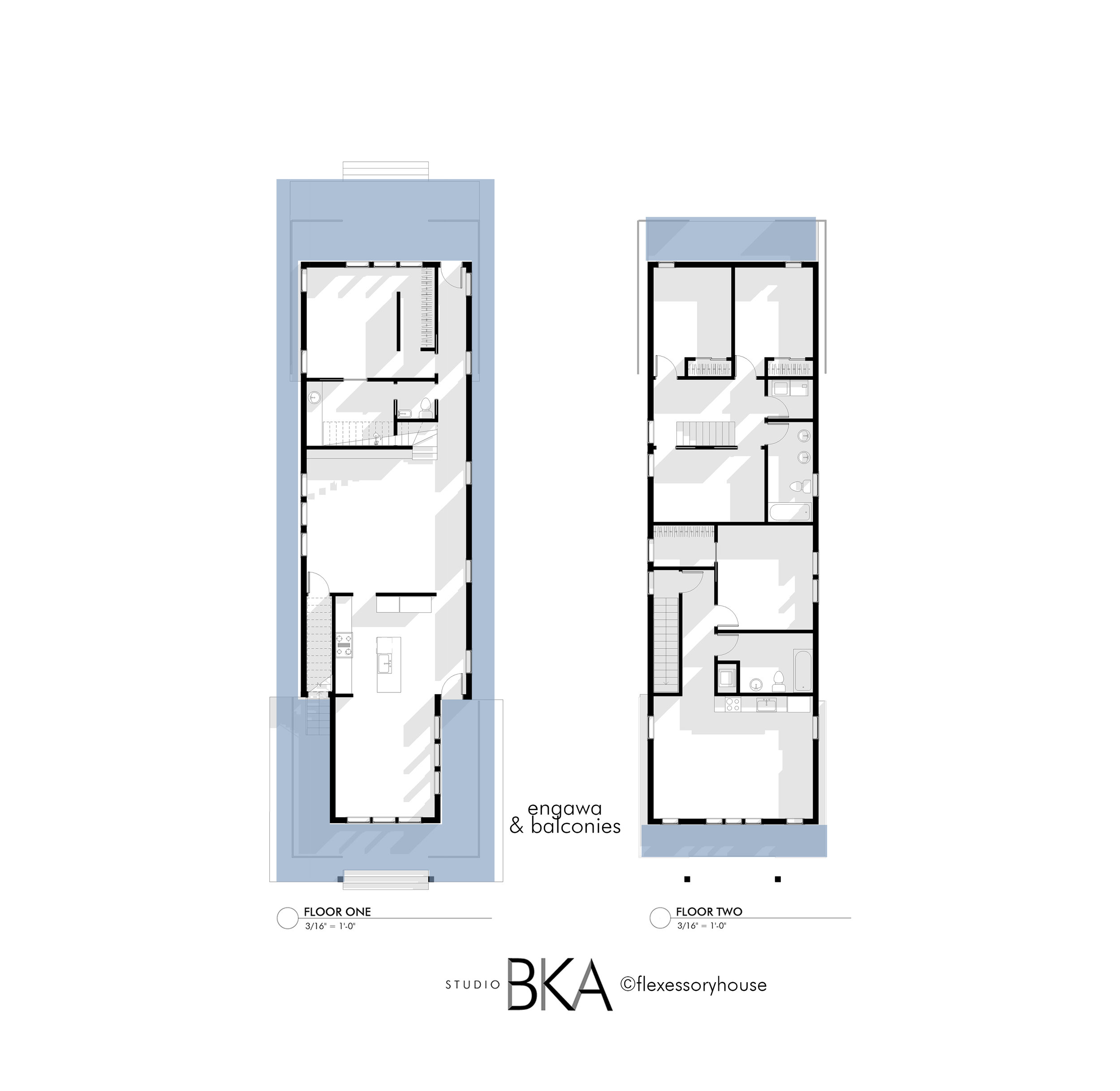
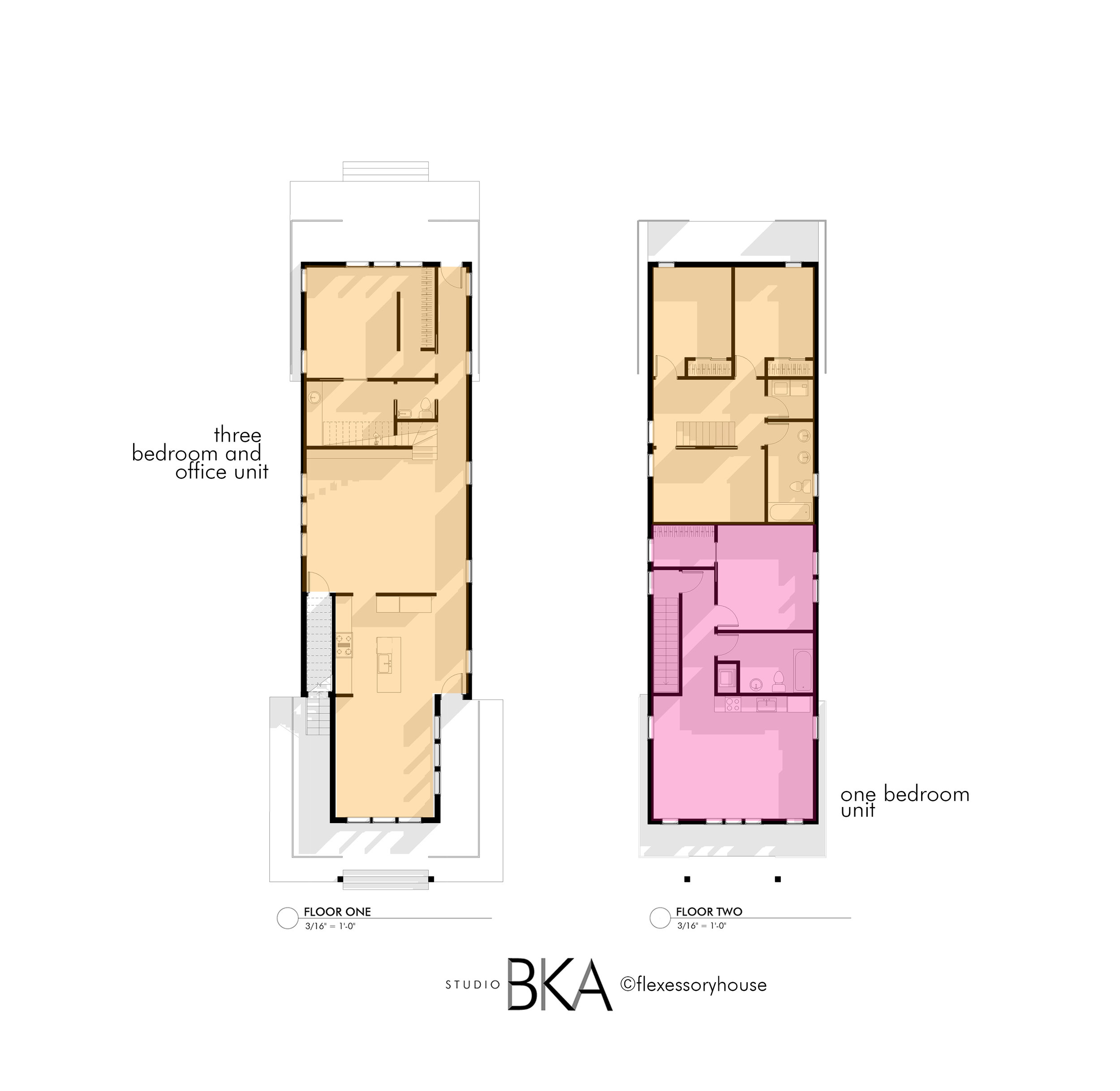
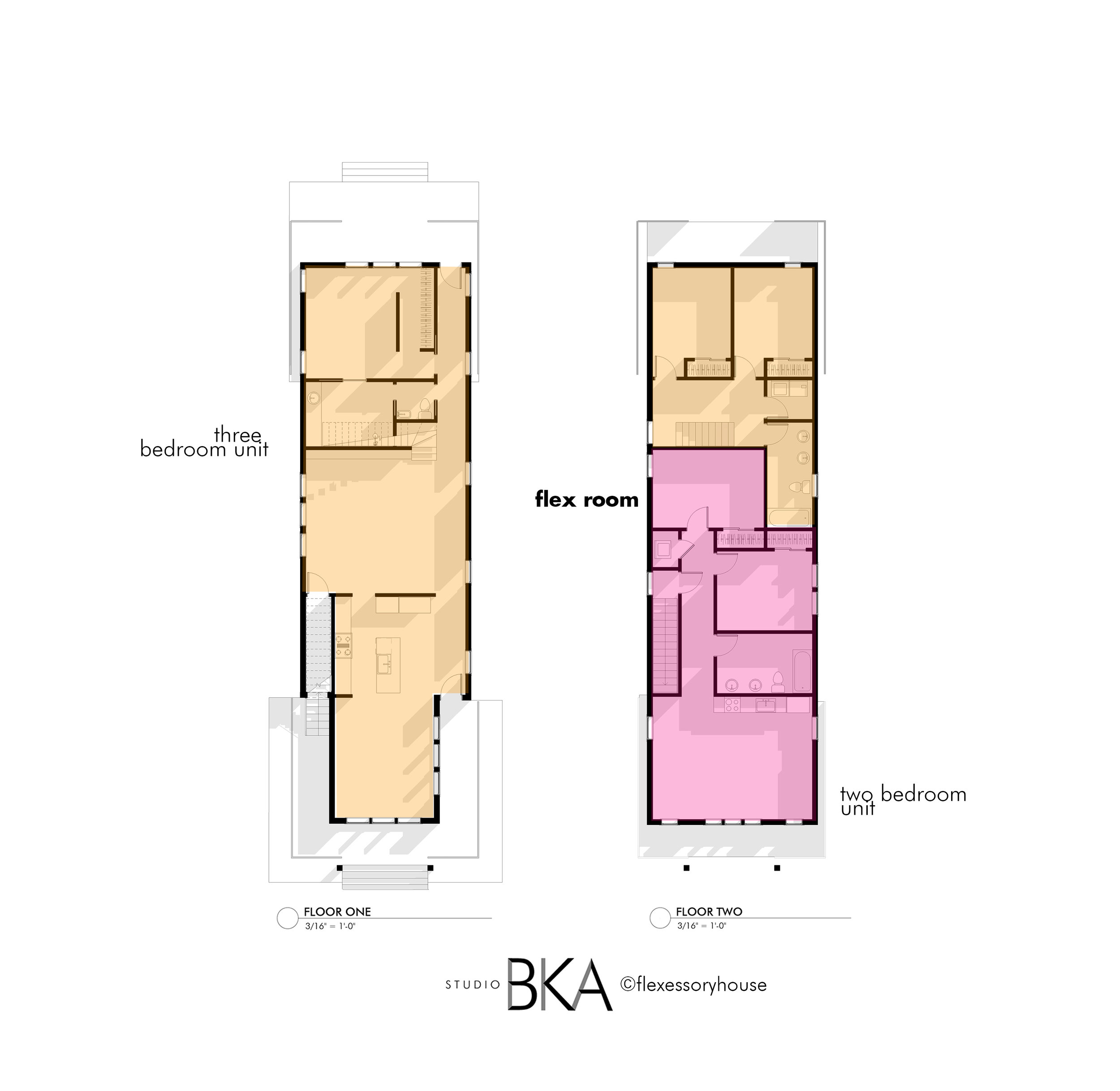
Flex + Accessory (Dwelling) = Flexessory
The FLEXESSORY house is a contemporary approach to the traditional shotgun plan, offering more flexibility to a family living, growing and shrinking in the house; or for different kinds of families to subsequently inhabit the house. Within the footprint of a typical two-family zoned lot, the house offers several easily reconfigured plans to allow for various sized units for an elderly family member, a college student, a small family, a vacation rental.
And though it could be a single-family home, it makes too much sense not to use it in a way that helps put more families back in New Orleans, creating more value, and reinforcing the historic use patterns that can continue the centuries-long reputation of New Orleans neighborhoods as the best in the country.

